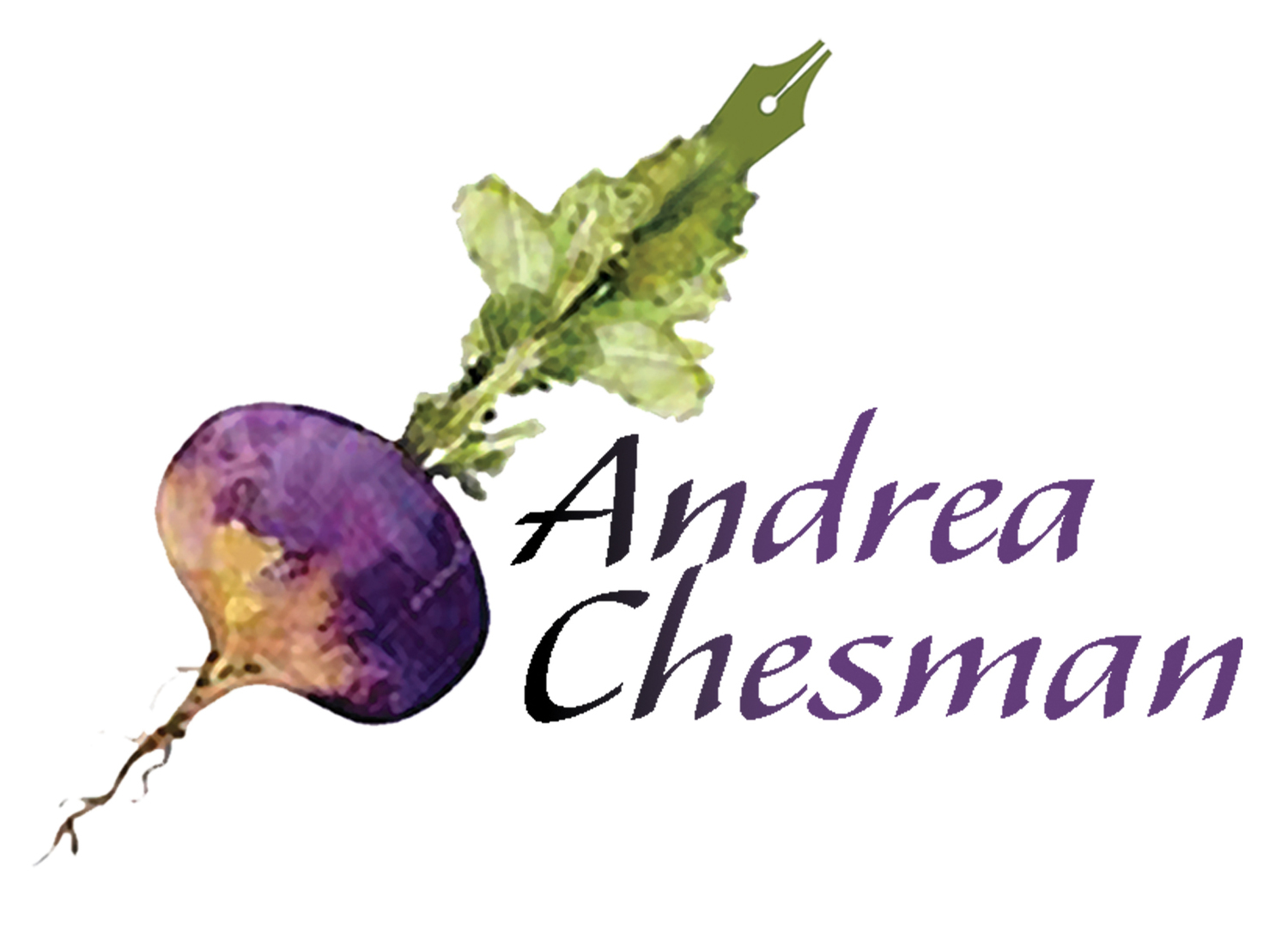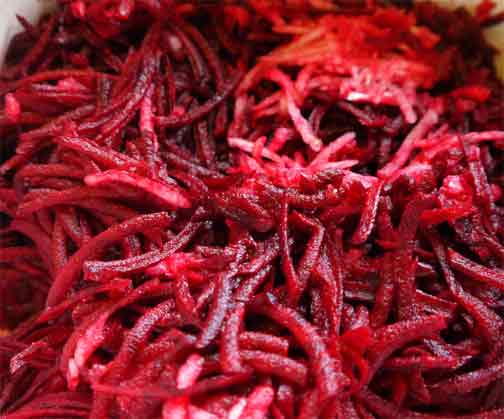The time has come
The gardener said
To post unpleasant blogs
Of does and bucks
And slugs and flies
And ravenous groundhogs.
 Groundhog AKA woodchuck AKA PEST!
Groundhog AKA woodchuck AKA PEST!
I have experienced rage, pure murderous, blinding rage only once in my life. It was provoked by a woodchuck.
This woodchuck, or ground hog as some would call it, could distinguish among the different sounds of various car motors and knew when a car pulled into the driveway whether it was one of the roommates who had a dog that would go after the woodchuck. It also knew which car was driven by someone who would go after the woodchuck with a shovel. And it knew the sound of my car. When I pulled in, he would stand on his hind legs and laugh at me. I swear it.
We tumbled rocks down the existing woodchuck holes. We contemplated pouring gasoline down the holes and throwing in burning sticks of wood. We contemplated dynamite. The lettuce was gone. The spinach was gone. The broccoli was sorely nibbled.
We built a fence around the garden. We buried the chicken wire a foot deep in the hard clay soil and swore no woodchuck would breech our defenses. Two new woodchuck holes opened up—right in the middle of the corn patch.
That’s when I experienced rage. I did go after that woodchuck with a shovel. But I never caught up to it. There was always another hole for it to escape into. Eventually, we both moved away.
My friend Jane is a woodchuck warrior of great skill and creativity. Jane lives in town, where woodchucks are particularly voracious and preys on backyard gardens. These gardens are not large enough to share with critters, so she has gathered all the neighbors together and enlisted them as well.
To begin with, Jane makes a woodchuck-hole sachet consisting four layers of 1-inch nylon netting (two layers are 3-feet square, the other layers are scraps. They netting is wrapped around rocks that are bigger than grapefruits. The netting is gathered around the rocks to resemble a purse, or sachet. She stuffs the netting sachet (she calls in a bon-bon) in each hole she finds. Jane also lays that same netting around the perimeter of her garden in sheets that are 25 feet long and 6 feet wide; the woodchucks don't like to cross it. She installed a solar-powered sound emitter that repels woodchucks. And she has electric fencing -- with one strand low enough to also deter rabbits.
I asked Jane how much she has spent on her woodchuck war. "Oh, I don't even want to guess," she said.
I don’t worry about woodchucks anymore. My son has a .22 and he knows how to use it. He is pretty firm in his conviction that you only kill what you eat, and I am firm in my conviction that I would rather eat a woodchuck than see one, so it all works out.
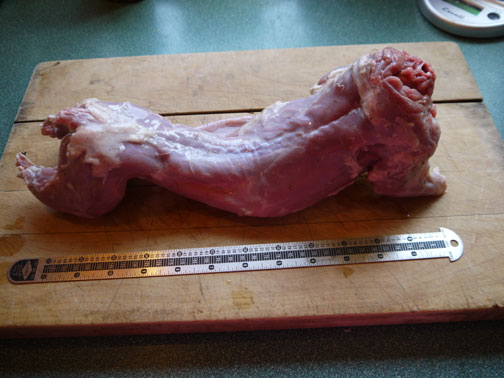 He looked huge but weighs only 2.14 pounds.
He looked huge but weighs only 2.14 pounds.
Woodchucks, for all their mass, don’t yield that much meat. The woodchucks average around 2 pounds after all the fur and organs are discarded. That 2-foot critter was mostly just voracious appetite and fur. It should be noted that woodchucks, as well as most other small food animals such as squirrel, have scent glands that should be cut out as soon as possible to avoid tainting the meat. When dressing woodchucks, look for and carefully remove without damaging any small gray or reddish brown kernels of fat located under the forelegs, on top of the shoulder blades, along the spine in the small of the back, and around the anus.
I have no family tradition to lean back on when it comes to cooking woodchuck, so I use my beef stew recipe. Here I made it with the last of my root-cellared carrots and potatoes, but any root vegetables are in stew. Also any meat.
The meat tastes more like squirrel or rabbit than anything else – they are all rodents, after all. I did not weep to see the stew disappear.
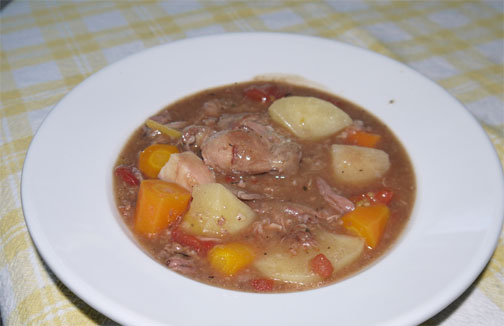 Mystery meat stew? No! It's woodchuck stew!
Mystery meat stew? No! It's woodchuck stew!
Woodchuck Stew
Serves 4 to 6
This recipe is adapted from a beef stew recipe from Recipes from the Root Cellar. A similar recipe appears in Serving up the Harvest.
2 pounds woodchuck, cut into serving pieces
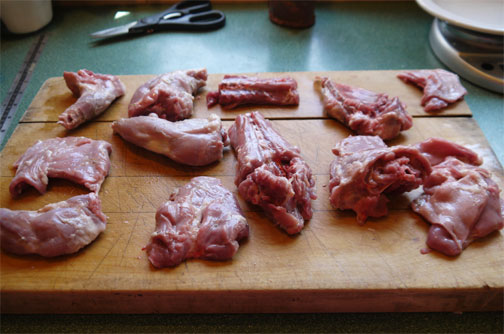 It's pretty obvious how to cut the critter up.
It's pretty obvious how to cut the critter up.
1/2 to 2/3 cup all-purpose unbleached flour
1 tablespoon dried thyme
1 teaspoon dried oregano
Salt and freshly ground black pepper
3 to 4 tablespoons extra virgin olive oil
1 large onion, thinly sliced
1 1/2 cups beef broth
2 cups home-canned or store-bought diced tomatoes with juice
1 cup red wine
2 garlic cloves, minced
12 to 16 ounces rutabaga or turnips, peeled and cut into 1-inch cubes
12 to 16 ounces carrots, peeled cut into 1-inch cubes
12 to 16 ounces parsnips, peeled and cut into 1-inch cubes
16 ounces thin-skinned potatoes, peeled and cut into 1-inch cubes
1. Pat the meat dry. Combine the flour, 1 teaspoon of the thyme, and oregano in a shallow bowl. Season generously with salt and pepper. Add the meat and toss to coat.
2. Heat 3 tablespoons of the oil over medium heat in a large saucepan or Dutch oven. Lift the meat out of the flour, shaking off the excess, and add a single layer to the pot. Do not crowd the pot. Let the meat brown, turning as needed, about 5 minutes. Remove the meat as it browns and set aside. Continue cooking until all the meat is browned.
3. Add the remaining 1 tablespoon oil and onion to the Dutch oven and sauté until the onion is soft, about 3 minutes. Add the broth, tomatoes, wine, garlic, and remaining 2 teaspoons thyme. Stir to scrape up any stuck bits from the bottom of the pan. Bring to a boil, then reduce the heat to a slow simmer. Return the meat to the pan. Partially cover the pan and let simmer until the meat is tender, 2 to 3 hours.
4. Add the rutabagas, carrots, parsnips, and potatoes to the pan and let simmer until the vegetables are tender, about 1 hour.
5. Taste and add salt and pepper as needed. Serve hot.
Recipe adapted from Recipes from the Root Cellar by Andrea Chesman. ©2010 Andrea Chesman. All rights reserved.
